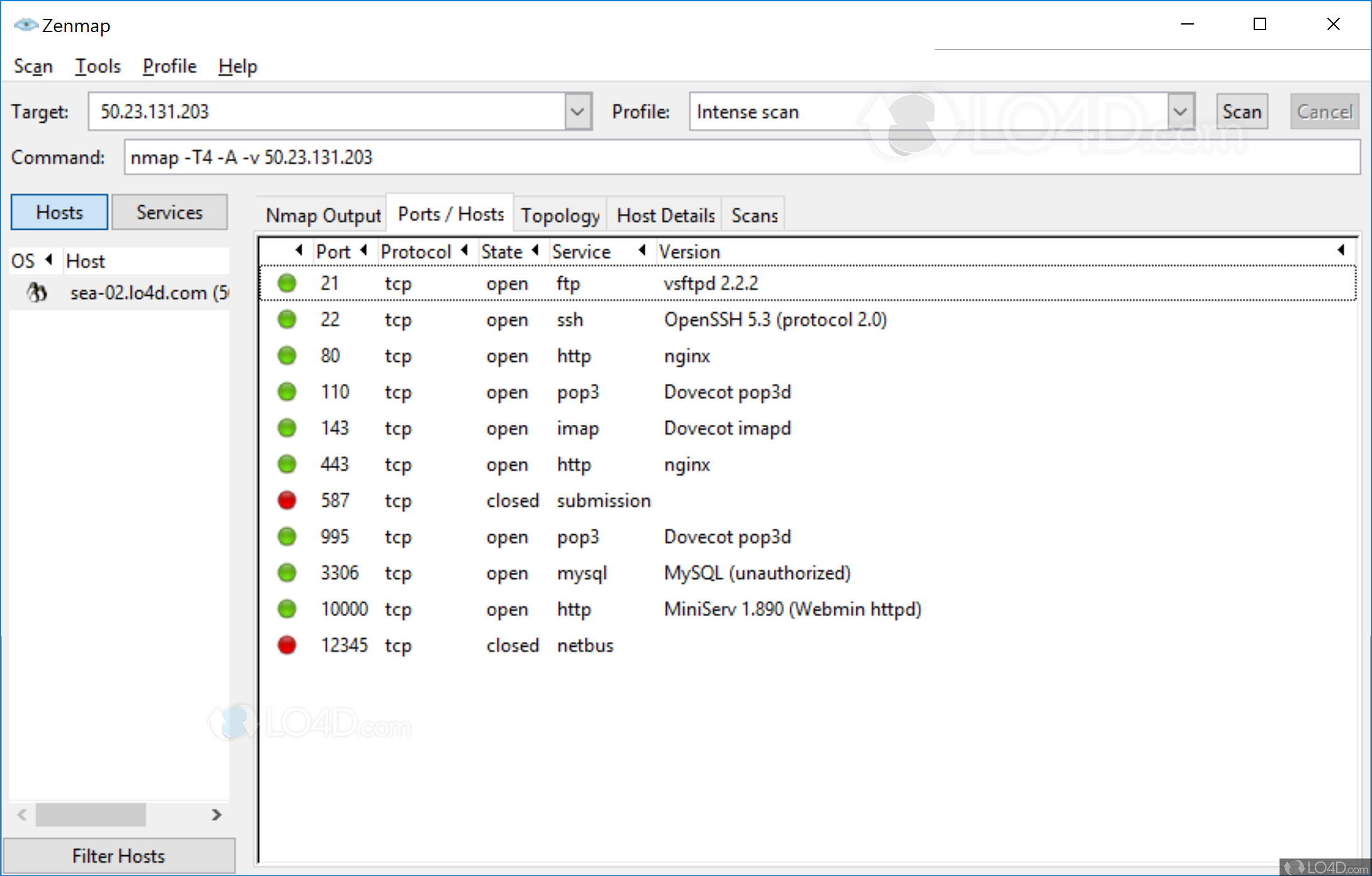

This ONLY affects devices that are only discovered using Nmap. Results shown in /tmp/nmap.txt Yes it it Python 2.7, please don't give me a hard time about it. The Issue (s) Up to and including 2.1 we have an issue where we were not populating, nor updating the IP table with the MAC Address retrieved from the Nmap scan (if any) during Discovery. I can't remember where I copied this from but this is the main data gathering part. There is probably other kit from the above list that is also not going to show. I have tried a number of other Nmap options including some of the Port scans options but could not get the Mobile phones to appear. The type of kit I want to detect includes:īasically anything that connects through our router. For example, listing the hosts that respond to TCP and/or ICMP requests or have a particular port open. Host discovery Identifying hosts on a network. What does the connected kit have to do or have to be classed as a Host? Nmap can provide further information on targets, including reverse DNS names, device types, and MAC addresses. For instance, mobile phones (cell phones) are not appearing in the list. I have tried using Nmap with the -sn option to discover the Hosts but have noticed that some connected equipment is not being reported. It can automatically detect all subnets according to the IP addresses configured on multiple NICs of a machine and scan the MAC addresses and IP addresses of defined subnets.I want to regularly record and keep a history of all MAC address and IP address details for items connected to our router at home to help resolve an IP clash issue that occasionally occurs. What is a Mac scanner?Ĭolasoft MAC Scanner is used for scanning IP address and MAC address. On thin client computers, the MAC ID label is located on the back of the system, below the certification label. On integrated thin clients, the MAC ID label is located on the back, below the power input jack. To find the MAC ID / Address of a system, either: Locate the MAC ID label on the back plastics of the system. Your IP address will be visible to the right, as indicated in the screenshot below. You can find any Macs IP, or your IP address from the Mac System Preferences Network configuration screen: From the Apple menu pull down “System Preferences”. Network administrators use Nmap to identify what devices are running on their systems, discovering hosts that are available and the services they offer, finding open ports and detecting security risks. Nmap, short for Network Mapper, is a free, open-source tool for vulnerability scanning and network discovery. IP Address is a logical address of the computer and is used to uniquely locate computer connected via a network.

MAC Address ensure that physical address of the computer is unique. Some IP address formats encode extra information for example some IPv6 addresses encode an IPv4 address or MAC address. What is IP address and MAC address?īoth MAC Address and IP Address are used to uniquely identify a machine on the internet. Shows extra information about IPv6 addresses, such as embedded MAC or IPv4 addresses when available.
NMAP SHOW MAC ADDRESS WINDOWS
You can view your networking card MAC Address by typing ipconfig /all in command prompt in any windows version, and the field “Physical Address” actually indicates your networking card MAC Address. Unauthorized port scanning, for any reason, is strictly prohibited. After all, no United States federal laws explicitly criminalize port scanning. While civil and (especially) criminal court cases are the nightmare scenario for Nmap users, these are very rare. You need to be careful about where you capture this information. This will give you access to network packets, and each packet will contain MAC addresses. Where can you capture MAC address information? The easiest way to capture MAC addresses is to monitor network traffic via a SPAN, mirror port, or TAP. Swipe all the way down to the bottom, and you will see both the IP and MAC address. Go to Settings->Wireless Controls->Wi-Fi settings. From this, the number of bits left for address space can be calculated. 2.0/24”, the number “24” refers to how many bits are contained in the network. For example, if a network has the address “192.0. There is a total of 32 bits in IPv4 address space. Two common examples are PortSentry and Scanlogd. Special purpose port scan detectors are a more effective approach to detecting Nmap activity. Log monitoring tools such as Logwatch and Swatch can certainly help, but the reality is that system logs are only marginally effective at detecting Nmap activity.


 0 kommentar(er)
0 kommentar(er)
